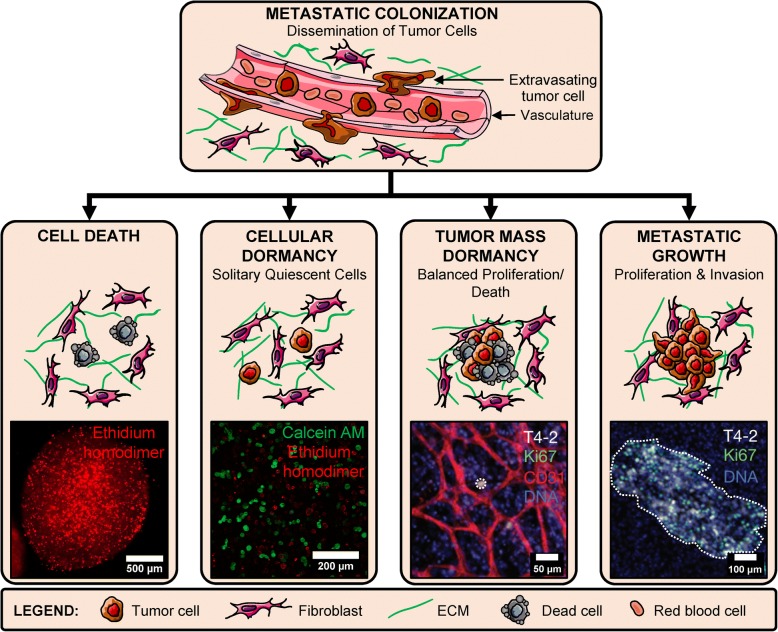Fig. 1.
Fate of disseminated tumor cells. Circulating tumor cells extravasate from vasculature at secondary sites and undergo one of four fates in the secondary niche: cell death (primarily via apoptosis), cellular dormancy (remain as single quiescent cells), tumor mass dormancy (small clusters with balanced proliferation and apoptosis) and metastatic growth (high proliferation and invasion). Cell Death: representative image of MCF7 cancer cells within hydrogel millibeads fluorescently labeled with ethidium homodimer (red) (Adapted from [90]) Copyright 2014, ACS. Cellular Dormancy: representative image of MDA-MB-231 breast cancer cells within hydrogels fluorescently labeled with calcein AM (green)/ethidium homodimer (red) (unpublished). Tumor Mass Dormancy: HMT-3522-T4-2 breast cancer cells cultured with lung stromal cells and endothelial cells form a small, non-proliferative colony (dotted circle) (Adapted from [42]). Metastatic Growth: HMT-3522-T4-2 cells cultured with lung stromal cells develop into invasive, proliferative clusters representative of metastatic outgrowth (dotted region) (Adapted from [42]). Copyright 2013, Springer Nature

